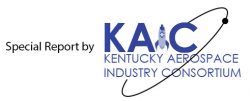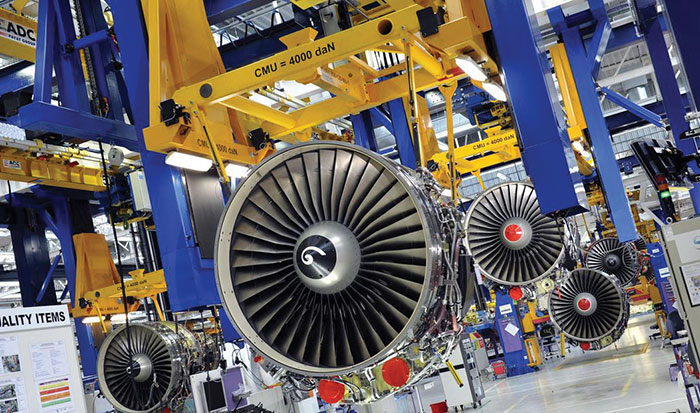 By Griffin Melzer, KAIC
By Griffin Melzer, KAIC
Network & Brand Development

The global aerospace industry, valued last year at $800 billion, continues to see positive growth. The need for more rapid and effective transportation to support commerce and tourism has grown the aerospace industry at such a rate that forecasters are predicting significant gaps in pilots, aftermarket aircraft parts and production rates. The airline industry predicts that over the next 30 years, the demand for pilots will grow by 400,000 to 800,000; analysts predict the demand for aftermarket parts to increase 6 percent annually, and large aircraft manufacturers expect to build more than 38,000 new aircraft over the next two decades.
 To meet these growing demands, the industry needs new players to step in, and that’s just what Kentucky plans to do. By taking advantage of the state’s advanced manufacturing capabilities, existing aerospace market, and emerging public-private partnerships, Kentucky will become a leader in the aerospace industry.
To meet these growing demands, the industry needs new players to step in, and that’s just what Kentucky plans to do. By taking advantage of the state’s advanced manufacturing capabilities, existing aerospace market, and emerging public-private partnerships, Kentucky will become a leader in the aerospace industry.
During the last few decades, Kentucky has become a logistical hub for the country. This is partly because of major logistical companies such as UPS, DHL, and Amazon Prime Air establishing major air hubs in Kentucky, but it is also because of the state’s proximity to many of the country’s major cities. Just as it helped the automotive industry prosper in the commonwealth, being centrally located affords Kentucky the opportunity to capitalize on the aerospace boom.
Kentucky’s aerospace foundation is solid, but state leaders must continue to analyze how Kentucky can effectively capitalize on this dynamic and expanding market.
In 2017, Kentucky had $11.7 billion in aerospace export, and had more than 600 companies and 17,000 jobs statewide that support the aerospace market. Kentucky needs to build on this momentum by showcasing itself as a stable, long-term player with the supply chain and infrastructure to sustain industry growth.
Several key factors will shape Kentucky’s aerospace industry. Some of these include preparedness for economic development, advancing the state’s sustainable workforce, developing a connected supply chain, promoting educational opportunities and more. Kentucky must be ready for the rapid change in technological innovation this industry currently requires.
How prepared is Kentucky for the growth of urban air mobility (UAM)? UAM consists of technology such as unmanned aerial vehicles (UAVs), better known as drones, as well as vertical-takeoff flying-taxis, a possible backbone of daily transportation that could be unveiled and implemented within the next 10 years.
How educated is the state’s industry on the advances in manufacturing processes and techniques? These include 3D printing or additive manufacturing, and the greater usage of newer and lighter-weight materials like fibers, alloys and composites.
Although Kentucky’s presence in the logistics market is becoming well-known, is it prepared to take the lead role when it comes to the trending growth in centralized logistics ports?
These are only some of the trending and emerging markets that the aerospace industry has forecasted, but the message it sends to a state like Kentucky is that it must not sit back and let this innovation pass it by. The commonwealth is ripe with opportunity, support and a strong foundation to study, collaborate, cooperate and propel the aerospace industry to new heights.
Griffin Melzer is a 2017 graduate of Salisbury University Perdue School of Business. He leads KAIC’s networking and brand development.




















Add Comment